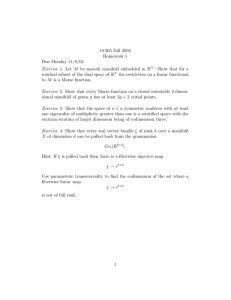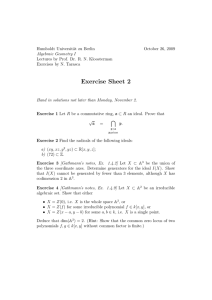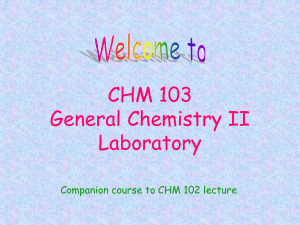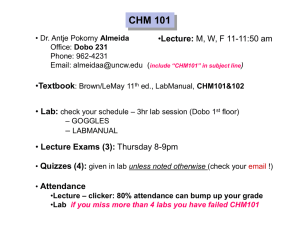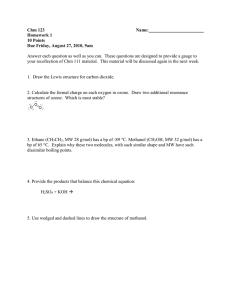Here
advertisement
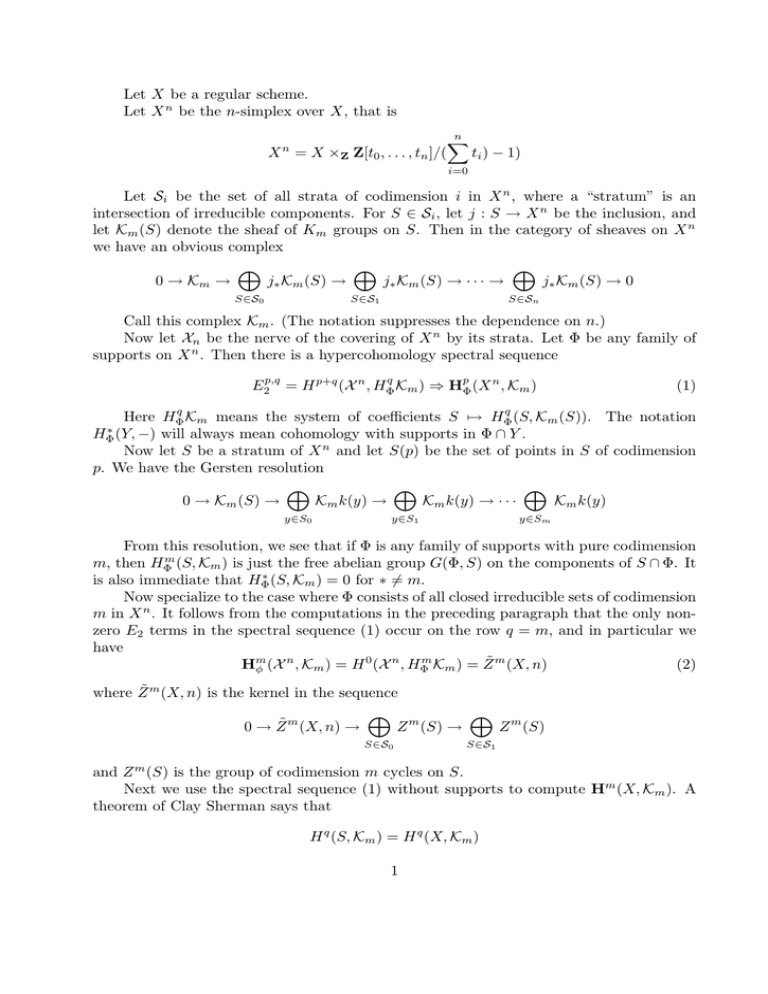
Let X be a regular scheme. Let X n be the n-simplex over X, that is n X ti ) − 1) X = X ×Z Z[t0 , . . . , tn ]/( n i=0 Let Si be the set of all strata of codimension i in X n , where a “stratum” is an intersection of irreducible components. For S ∈ Si , let j : S → X n be the inclusion, and let Km (S) denote the sheaf of Km groups on S. Then in the category of sheaves on X n we have an obvious complex M M M 0 → Km → j∗ Km (S) → j∗ Km (S) → · · · → j∗ Km (S) → 0 S∈S0 S∈S1 S∈Sn Call this complex Km . (The notation suppresses the dependence on n.) Now let Xn be the nerve of the covering of X n by its strata. Let Φ be any family of supports on X n . Then there is a hypercohomology spectral sequence E2p,q = H p+q (X n , HΦq Km ) ⇒ HpΦ (X n , Km ) (1) Here HΦq Km means the system of coefficients S 7→ HΦq (S, Km (S)). The notation HΦ∗ (Y, −) will always mean cohomology with supports in Φ ∩ Y . Now let S be a stratum of X n and let S(p) be the set of points in S of codimension p. We have the Gersten resolution M M M 0 → Km (S) → Km k(y) → Km k(y) → · · · Km k(y) y∈S0 y∈S1 y∈Sm From this resolution, we see that if Φ is any family of supports with pure codimension m, then HΦm (S, Km ) is just the free abelian group G(Φ, S) on the components of S ∩ Φ. It 6 m. is also immediate that HΦ∗ (S, Km ) = 0 for ∗ = Now specialize to the case where Φ consists of all closed irreducible sets of codimension m in X n . It follows from the computations in the preceding paragraph that the only nonzero E2 terms in the spectral sequence (1) occur on the row q = m, and in particular we have n 0 n m m Hm (2) φ (X , Km ) = H (X , HΦ Km ) = Z̃ (X, n) where Z̃ m (X, n) is the kernel in the sequence M M 0 → Z̃ m (X, n) → Z m (S) → Z m (S) S∈S0 S∈S1 and Z m (S) is the group of codimension m cycles on S. Next we use the spectral sequence (1) without supports to compute Hm (X, Km ). A theorem of Clay Sherman says that H q (S, Km ) = H q (X, Km ) 1 for all q and m (here we are using the fact that X is regular and S is isomorphic to X crossed with affine space), so that the system of coefficients is constant on the nerve X n . It follows from this and the fact that the geometric realization of X n is a sphere that the E2 terms are non-zero only for p = 0, n and we have E20,q = E2n,q = H q (X, Km ) Thus the spectral sequence gives 0 → H m−1 (X, Km ) → H m−n (X, Km ) → Hm (X, Km ) → H m (X, Km ) (3) Note that the rightmost term in the above exact sequence is known (“Bloch’s Formula”) to be Chm (X). Finally, consider the map from cohomology with supports to cohomology without supports: d 0 → H m−1 (X, Km ) → Z̃ m (X, n) || m HΦ (X n , m) ↓ m−n m H (X, Km ) → H (X n , Km ) → H m (X, Km ) → 0 || m Ch (X) S The kernel of the vertical map is an image of Hm−1 (X n − Φ, Km ), which can be identified with the image of Z m+1 (X × An+1 ) in Z̃ m (X, n). The quotient of Z̃ m (X, n) by this image is by definition the higher Chow group Chm (X, n). The map from the higher Chow group Chm (X, n) to the lower Chow group Chm (X) is clearly zero. Therefore we get a map Chm (X, n) → H m−n (X, Km )/image(d) . I assume there is some obvious way to lift this map to H m−n (X, Km ) but I don’t quite see it right now. I also assume this is the same map I construct in my paper on Relative Chow Groups, but I don’t remember whether I ever fully checked that. 2
